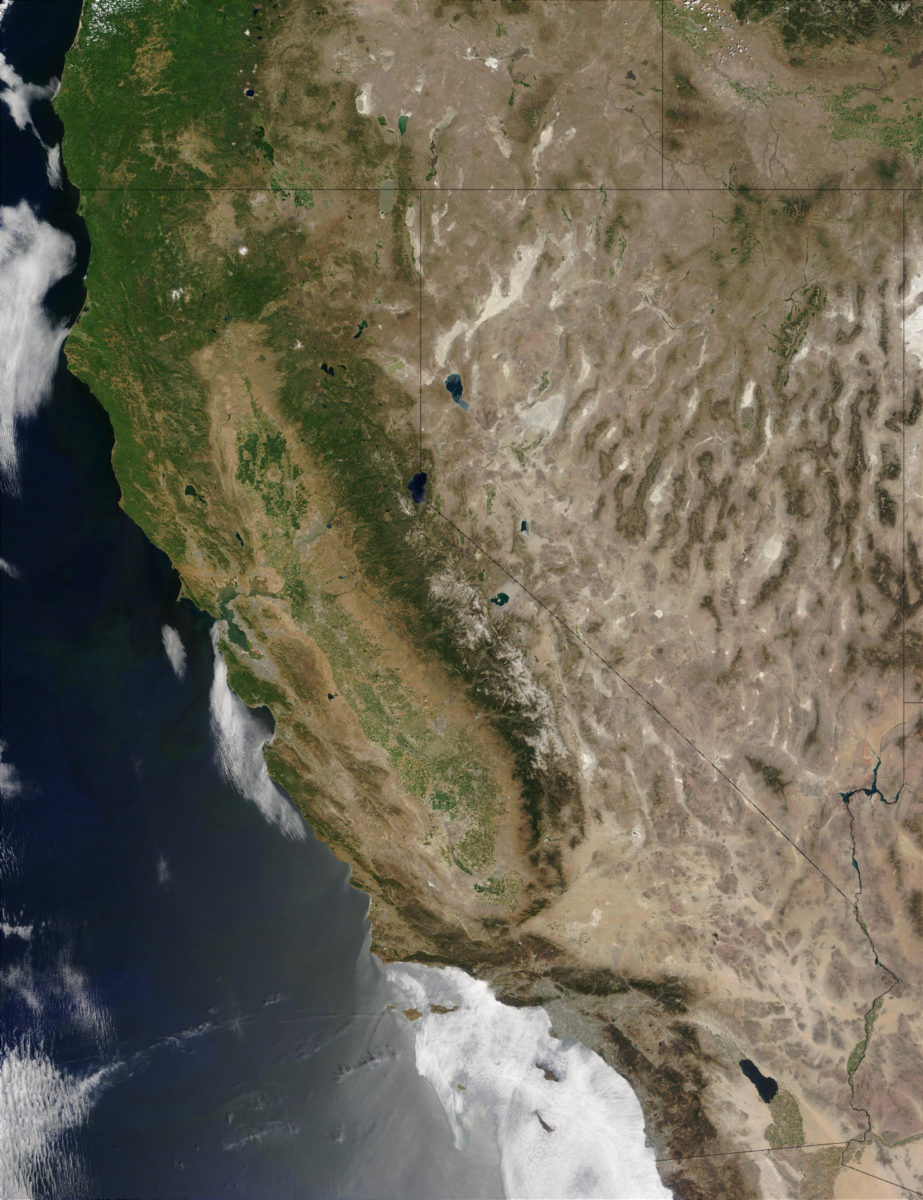
Picture this: A storm gathers off the Pacific, its clouds heavy, bloated with moisture stolen from the ocean. They press forward, barreling toward the rugged face of a towering mountain range like the Sierra Nevada or the Cascades. As the storm meets the peaks, it’s as if an invisible hand drags the moisture-laden air skyward, lifting it higher, step by step. Soon, the mountains disappear in a swirl of clouds, fat snowflakes falling on the western slopes, blanketing the world in white. But just beyond the summit lies a different story—one of stark desolation and dry, barren landscapes. How can something so green and snow-laden create such an arid world beyond?
This puzzling dance between lush, snowy mountains and arid deserts is no coincidence. It’s an extraordinary phenomenon called a rain shadow. It explains the bare valleys of Nevada, the arid steppe of eastern Washington, and even the Gobi Desert that lies in the shadow of the world’s tallest mountains, the Himalayas. The same physics of storm systems that bless skiers with thigh-deep powder on one side of the mountain also strip snow from slopes on the other, reshaping landscapes and, ultimately, our skiing dreams.
The Process: Orographic Lift and Mountain Magic

When air meets a mountain, it doesn’t have much choice—it has to go up. This process is called orographic lift. Imagine pedaling a loaded bike uphill; as you climb, each push of the pedals becomes harder. Air feels the same strain as it is forced upward along the windward (western-facing) slope of a mountain.
On the way up, something curious happens. As the air rises, it cools. Cooler air can’t hold as much moisture as warm air, so that moisture condenses into droplets, forming clouds. It’s nature’s way of ringing the water out like a sponge. The higher the air climbs, the colder it gets—and the more moisture gets squeezed out. By the time the clouds hit a sufficient altitude, all that water is released as rain or snow, blessing the windward side with life-giving precipitation. This is why, for example, the west side of the Cascades cradles lush, emerald-green forests, and why ski resorts like Washington’s Mount Baker get absolutely dumped on with snow.
For skiers, orographic lift is magic. It’s what creates that dreamlike powder—storm after storm unloading over the windward slopes of a mountain range, stacking up snow that’s cold, dry, and perfect for carves and cliff drops. The steep terrain of Western mountains practically serves as a precipitation magnet, pulling moisture from the sky. But nature is always about balance, and for every lush deluge, there’s a dry price paid on the other side.
The Dry Side: What Lies Beyond the Peaks
On the leeward (eastern-facing) side of a mountain range, the story flips. Once the storm passes the summit, the air begins to sink. Coming downhill is a lot easier, and like a cyclist hitting a downhill stretch, the air warms up and expands. Warm air can hold more moisture than cool air, which means the little water vapor left in this descending current gets absorbed rather than released.
By the time that air hits the ground on the leeward side, it’s parched. All of the moisture was dropped over the mountains, leaving the land beyond in a “rain shadow.” These regions are dry—sometimes shockingly so. For skiers hoping for soft turns, the scene on this side of the mountain is often underwhelming. Just a ridge away from deep powder, you’ll find lower snow totals and crusty, sunbaked slopes.

You can see this striking transition clearly in the Pacific Northwest. Drive east from Seattle, leaving behind lush rainforest fed by Pacific storms. Within hours, you’re in a high-desert landscape of sagebrush and rolling hills. This stark divide is the hallmark of a rain shadow. On a bigger scale, the Sierra Nevada creates the same effect, forming the vast deserts of Nevada to its east. Even the largest deserts in the world, like the Gobi Desert, exist because the Himalayas strip moisture from storm systems moving across Asia.

Here’s why the dryness tends to show up on the east side: In mid-latitudes like the U.S. or Central Asia, storms generally move from west to east, riding on dominant westerly winds. As those systems roar into mountain ranges, they lose their moisture on the west (windward) side, leaving the east (leeward) side high and dry.
The Real Impact: Rain Shadows and Skiing
It’s not just rain that gets stolen in this process—snowfall takes a hit, too.
Take the Sierra Nevada as an example. Resorts like Heavenly or those closer to the eastern side of the range often see significantly less snowfall than their counterparts perched on the windward slopes, like Palisades Tahoe or Kirkwood. Mammoth Mountain, lucky enough to sit just right to capture lingering moisture, still benefits, but not on the heroic scale of its western neighbors. If you’re chasing powder, understanding snow shadows can mean the difference between chest-deep turns and scraping crust on barren hillsides.
Bend this knowledge to your advantage. Head to the right side of the storm. Windward-facing slopes—think Mt. Baker in Washington, Kirkwood in California, or Alta in Utah (which benefits from its own version of orographic lift)—often see higher snow totals thanks to their placement directly in the storm’s path. By contrast, areas in the lee of major ranges, like parts of Colorado’s Front Range or resorts just east of the Cascades, can be drier and sunnier. Beautiful, yes, but if you’re angling for fresh powder, you might find yourself wishing the storm had stayed put on the other side of the mountain.